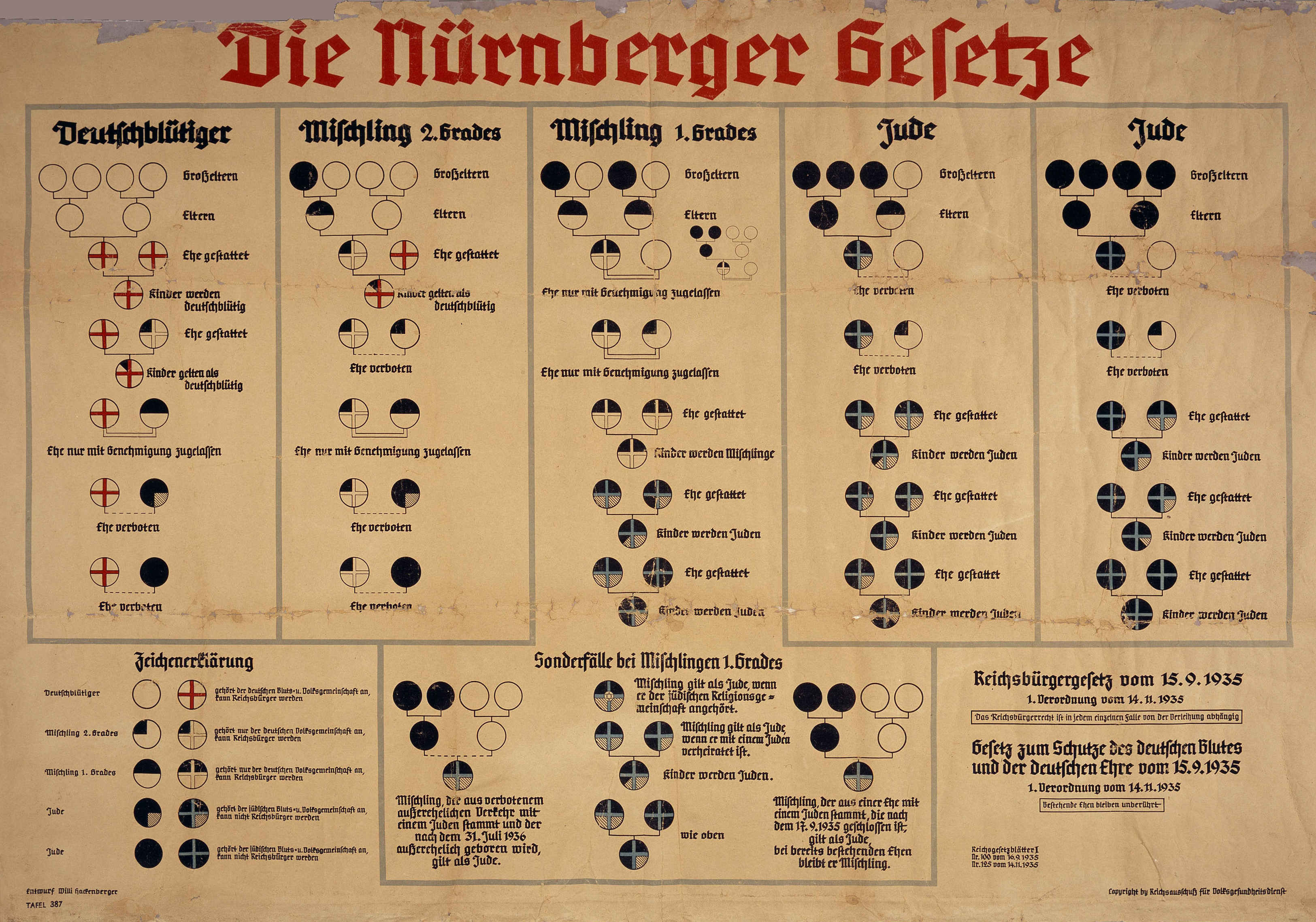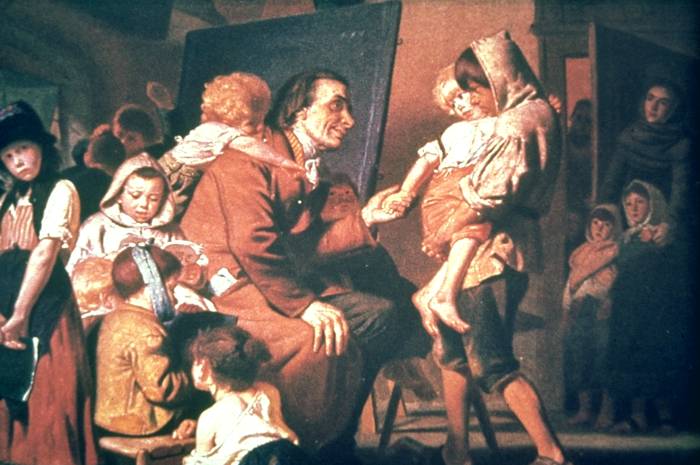|
Anne-Eva Brauneck
Anne-Eva Brauneck (born 9 December 1910 in Hamburg; died 6 March 2007 in Lich) became the first or second female (West) German Professor of Law, professor of law in 1965. Brauneck studied law at the end of the Weimar Republic at the Heidelberg University, University of Heidelberg. She turned to studies on the family backgrounds of Young offender, juvenile offenders. Her work was suspect to the National Socialists because it did not conform to the Nazi Germany, government Mantra#Definition, mantras involving the "hereditary nature" of criminal proclivity. Life Provenance and early years Anne-Eva Brauneck was born in Hamburg, the second of her parents' two daughters. The girls' father, who was very much older than their mother, was a Gymnasium (Germany), secondary school head. She studied Jurisprudence at Heidelberg University, Heidelberg during the Great Depression in a period of socio-economic nemesis, political polarisation and parliamentary deadlock which led to the Gleichs ... [...More Info...] [...Related Items...] OR: [Wikipedia] [Google] [Baidu] |
Hamburg
(male), (female) en, Hamburger(s), Hamburgian(s) , timezone1 = Central (CET) , utc_offset1 = +1 , timezone1_DST = Central (CEST) , utc_offset1_DST = +2 , postal_code_type = Postal code(s) , postal_code = 20001–21149, 22001–22769 , area_code_type = Area code(s) , area_code = 040 , registration_plate = , blank_name_sec1 = GRP (nominal) , blank_info_sec1 = €123 billion (2019) , blank1_name_sec1 = GRP per capita , blank1_info_sec1 = €67,000 (2019) , blank1_name_sec2 = HDI (2018) , blank1_info_sec2 = 0.976 · 1st of 16 , iso_code = DE-HH , blank_name_sec2 = NUTS Region , blank_info_sec2 = DE6 , website = , footnotes ... [...More Info...] [...Related Items...] OR: [Wikipedia] [Google] [Baidu] |
Staatsexamen
The ("state examination" or "exam by state"; pl.: ''Staatsexamina'') is a German government licensing examination that future physicians, dentists, teachers, pharmacists, food chemists, psychotherapists and jurists (i.e., lawyers, judges, public prosecutors, civil-law notaries) as well as surveyors have to pass to be allowed to work in their profession. The examination is generally organized by government examination agencies which are under the authority of the responsible ministry. These agencies create examination commissions which consist of members of the examination agency, university professors and/or representatives from the professions. The Staatsexamina are both legally equivalent to a master's degree in the respective operating ranges. Overview Graduating is separated into two independent sequences: the first and the second . Students usually study at university for 4–8 years before they participate at final examinations to graduate by the first . This shows the ... [...More Info...] [...Related Items...] OR: [Wikipedia] [Google] [Baidu] |
Nazism
Nazism ( ; german: Nazismus), the common name in English for National Socialism (german: Nationalsozialismus, ), is the far-right totalitarian political ideology and practices associated with Adolf Hitler and the Nazi Party (NSDAP) in Nazi Germany. During Hitler's rise to power in 1930s Europe, it was frequently referred to as Hitlerism (german: Hitlerfaschismus). The later related term "neo-Nazism" is applied to other far-right groups with similar ideas which formed after the Second World War. Nazism is a form of fascism, with disdain for liberal democracy and the parliamentary system. It incorporates a dictatorship, fervent antisemitism, anti-communism, scientific racism, and the use of eugenics into its creed. Its extreme nationalism originated in pan-Germanism and the ethno-nationalist '' Völkisch'' movement which had been a prominent aspect of German nationalism since the late 19th century, and it was strongly influenced by the paramilitary groups that emerged af ... [...More Info...] [...Related Items...] OR: [Wikipedia] [Google] [Baidu] |
Schutzstaffel
The ''Schutzstaffel'' (SS; also stylized as ''ᛋᛋ'' with Armanen runes; ; "Protection Squadron") was a major paramilitary organization under Adolf Hitler and the Nazi Party in Nazi Germany, and later throughout German-occupied Europe during World War II. It began with a small guard unit known as the ''Saal-Schutz'' ("Hall Security") made up of party volunteers to provide security for party meetings in Munich. In 1925, Heinrich Himmler joined the unit, which had by then been reformed and given its final name. Under his direction (1929–1945) it grew from a small paramilitary formation during the Weimar Republic to one of the most powerful organizations in Nazi Germany. From the time of the Nazi Party's rise to power until the regime's collapse in 1945, the SS was the foremost agency of security, surveillance, and terror within Germany and German-occupied Europe. The two main constituent groups were the '' Allgemeine SS'' (General SS) and ''Waffen-SS'' (Armed SS). The ' ... [...More Info...] [...Related Items...] OR: [Wikipedia] [Google] [Baidu] |
Heinrich Himmler
Heinrich Luitpold Himmler (; 7 October 1900 – 23 May 1945) was of the (Protection Squadron; SS), and a leading member of the Nazi Party of Germany. Himmler was one of the most powerful men in Nazi Germany and a main architect of the Holocaust. As a member of a reserve battalion during World War I, Himmler did not see active service, and did not fight. He studied agriculture in university, and joined the Nazi Party in 1923 and the SS in 1925. In 1929, he was appointed by Adolf Hitler. Over the next 16 years, he developed the SS from a 290-man battalion into a million-strong paramilitary group, and set up and controlled the Nazi concentration camps. He was known for good organisational skills and for selecting highly competent subordinates, such as Reinhard Heydrich in 1931. From 1943 onwards, he was both Chief of German Police and Minister of the Interior, overseeing all internal and external police and security forces, including the Gestapo (Secret State Police). H ... [...More Info...] [...Related Items...] OR: [Wikipedia] [Google] [Baidu] |
Aftermath Of World War II
The aftermath of World War II was the beginning of a new era started in late 1945 (when World War II ended) for all countries involved, defined by the decline of all colonial empires and simultaneous rise of two superpowers; the Soviet Union (USSR) and the United States (US). Once Allies during World War II, the US and the USSR became competitors on the world stage and engaged in the Cold War, so called because it never resulted in overt, declared total war between the two powers but was instead characterized by espionage, political subversion and proxy wars. Western Europe and Asia were rebuilt through the American Marshall Plan, whereas Central and Eastern Europe fell under the Soviet sphere of influence and eventually behind an "Iron Curtain". Europe was divided into a US-led Western Bloc and a USSR-led Eastern Bloc. Internationally, alliances with the two blocs gradually shifted, with some nations trying to stay out of the Cold War through the Non-Aligned Movement. The war als ... [...More Info...] [...Related Items...] OR: [Wikipedia] [Google] [Baidu] |
Nazism And Race
The Nazi Party adopted and developed several pseudoscientific racial classifications as part of its ideology (Nazism) in order to justify the genocide of groups of people which it deemed racially inferior. The Nazis considered the putative "Aryan race" a superior "master race", and they considered black people, mixed-race people, Slavs, Roma, Jews and other ethnic groups racially inferior " sub-humans", whose members were only suitable for slave labor and extermination. These beliefs stemmed from a mixture of 19th-century anthropology, scientific racism and anti-semitism. Racial hierarchy The Nazis claimed to observe a strict and scientific hierarchy of the human race. Adolf Hitler's views on race and people are found throughout his autobiographical manifesto book ''Mein Kampf'' but more specifically, they are found in chapter 11, the title of which is "Nation and Race". The standard-issue propaganda text which was issued to members of the Hitler Youth contained a chapter ... [...More Info...] [...Related Items...] OR: [Wikipedia] [Google] [Baidu] |
Hitler Cabinet
The Hitler cabinet was the government of Nazi Germany between 30 January 1933 and 30 April 1945 upon the appointment of Adolf Hitler as Chancellor of the German Reich by president Paul von Hindenburg. It was originally contrived by the national conservative politician Franz von Papen, who reserved the office of the Vice-Chancellor for himself. Originally, Hitler's first cabinet was called the Reich Cabinet of National Salvation, which was a coalition of the Nazi Party (NSDAP) and the national conservative German National People's Party (DNVP). History In brokering the appointment of Hitler as Reich Chancellor, Papen had sought to control Hitler by limiting the number of Nazi ministers in the cabinet; initially Hermann Göring (without portfolio) and Wilhelm Frick (Interior) were the only Nazi ministers. Further, Alfred Hugenberg, the head of the DNVP, was enticed into joining the cabinet by being given the Economic and Agricultural portfolios for both the Reich and Prussia, with ... [...More Info...] [...Related Items...] OR: [Wikipedia] [Google] [Baidu] |
Johann Heinrich Pestalozzi
Johann Heinrich Pestalozzi (, ; 12 January 1746 – 17 February 1827) was a Swiss pedagogue and educational reformer who exemplified Romanticism in his approach. He founded several educational institutions both in German- and French-speaking regions of Switzerland and wrote many works explaining his revolutionary modern principles of education. His motto was "Learning by head, hand and heart". Thanks to Pestalozzi, illiteracy in 18th-century Switzerland was overcome almost completely by 1830. Life Early years – 1746–1765 Pestalozzi was born on 12 January 1746, in Zürich, Switzerland. His father was a surgeon and oculist who died at age 33 when Pestalozzi, the second of three children, was five years old; he belonged to a family who had fled the area around Locarno due to its Protestant faith. His mother, whose maiden name was Hotze, was a native of Wädenswil on the lake of Zürich. The family also had a maid, Barbara Schmid, nicknamed Babeli. After the death of Pestalo ... [...More Info...] [...Related Items...] OR: [Wikipedia] [Google] [Baidu] |





